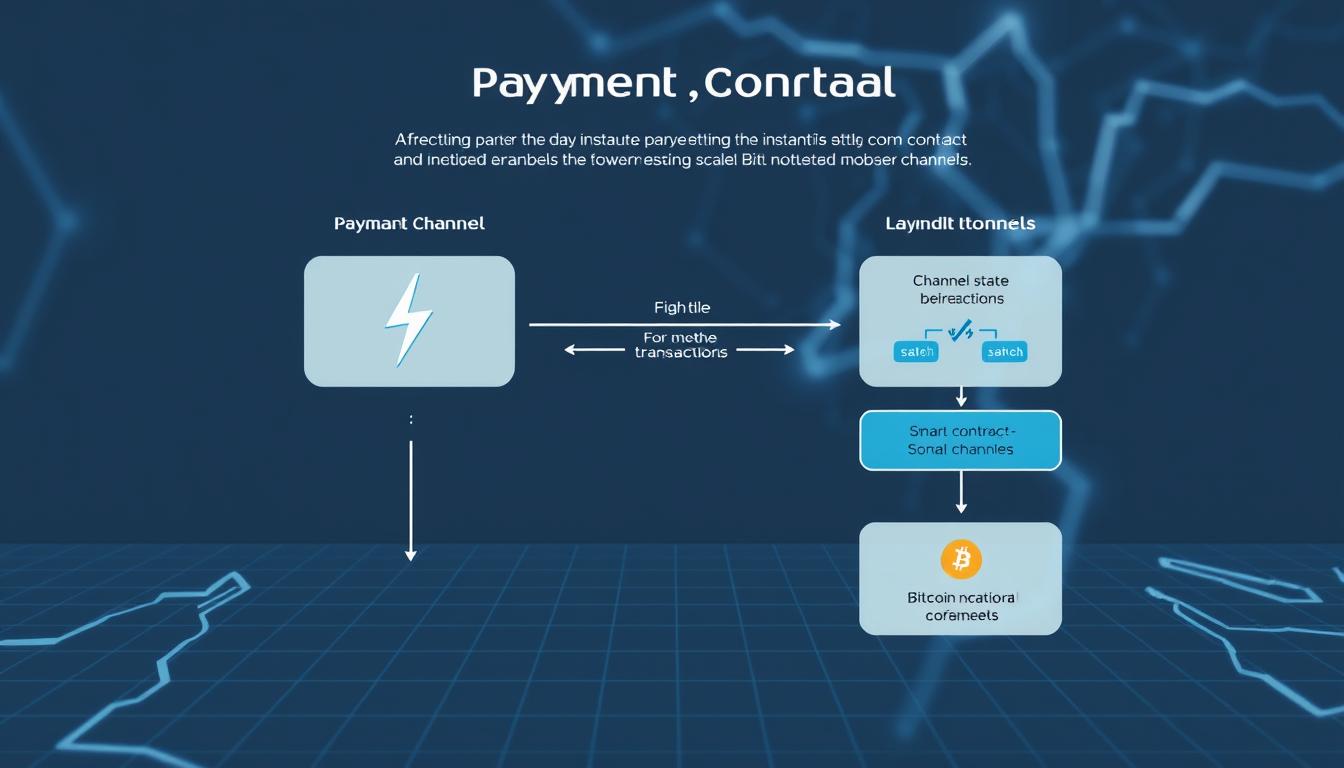Now Reading: Unlocking the Power of the Bitcoin Lightning Network
- 01
Unlocking the Power of the Bitcoin Lightning Network
Unlocking the Power of the Bitcoin Lightning Network
In 2015, developers Tadge Dryja and Joseph Poon proposed a groundbreaking idea to solve a critical problem: slow, expensive cryptocurrency transactions. As adoption grew, the original blockchain struggled to handle demand, causing delays and soaring fees. This challenge sparked the creation of a layer-2 solution designed to work alongside the core system while dramatically improving efficiency.

The lightning network operates as an off-chain protocol, enabling users to conduct transactions without overloading the primary ledger. By opening payment channels between parties, it processes exchanges instantly and at minimal cost. These transactions settle on the main blockchain only when channels close, preserving security while reducing congestion.
This innovation isn’t just about speed—it’s a gateway to real-world usability. Coffee purchases, streaming micropayments, and cross-border transfers become practical with fees as low as a fraction of a cent. The technology maintains decentralization, ensuring no single entity controls the network.
For those interested in unlocking the power of this layer-2, understanding its mechanics is key. It combines cryptographic techniques like Hashed Time-Locked Contracts (HTLCs) with bidirectional channels to protect against fraud. Compatibility with upgrades like Segregated Witness (SegWit) further enhances its versatility.
Key Takeaways
- Created to address scalability challenges in blockchain systems
- Enables instant transactions with near-zero fees
- Uses off-chain channels to reduce main network congestion
- Maintains security through advanced cryptographic protocols
- Supports everyday use cases like micropayments
- Compatible with existing blockchain infrastructure
Foundations of the Bitcoin Lightning Network
The quest to solve blockchain congestion began with a white paper that reshaped digital payments. In 2016, Joseph Poon and Tadge Dryja released their vision for a system enabling instant, low-cost exchanges. Their work laid the groundwork for what would become a critical layer-2 protocol.

Origins and Evolution
Development started in 2015, with Lightning Labs launching a beta version by 2018. Tech leaders like Jack Dorsey backed the project, accelerating adoption. Major upgrades followed—2020’s Wumbo Channels expanded transaction limits, while Keysend allowed direct real-time payments without invoices.
How Payment Channels and Smart Contracts Work
Two parties create a shared wallet requiring dual approval for transactions. This setup lets them conduct unlimited exchanges off-chain. Only the final balance records on the main ledger when closing the channel. Automated contracts enforce rules, preventing fraud while maintaining privacy-focused applications.
The architecture achieves three core goals:
- Reduces strain on primary networks
- Enables microtransactions impractical elsewhere
- Preserves security through cryptographic checks
Lightning Network and Payment Channels Explained
Payment channels revolutionize how users exchange value by bypassing traditional bottlenecks. These pathways allow two parties to conduct numerous transactions off the main ledger, only settling final balances when needed. The system relies on shared wallets requiring dual approval, ensuring no single participant controls the funds.

Multi-Signature Wallets and Security Features
Creating a channel starts with a multi-signature wallet funded by both users. Each transaction within this private pathway updates asset distribution through cryptographically signed agreements. Unlike conventional methods, these exchanges never broadcast to the core system until closure.
Three layers protect users:
- Time-locked contracts prevent unauthorized balance claims
- Biometric or hardware wallet integration for signature verification
- Real-time monitoring of channel states
When closing a channel, all accumulated activity compresses into one on-chain record. This approach reduces fees by up to 99% compared to standard methods. The protocol automatically verifies each step, maintaining accuracy without third-party oversight.
Advanced encryption ensures privacy while operating these pathways. Participants see only their own transaction history, not the broader network’s activity. This design supports everything from $0.01 content purchases to cross-border business deals.
Benefits of Lightning Payments for Fast, Low-Cost Transactions
Modern financial systems demand speed and affordability—two areas where traditional blockchain methods often fall short. The layer-2 protocol transforms digital exchanges by combining instant settlement with costs measured in fractions of a cent.

Instant Transfers and Reduced Fees
Payment confirmations now occur in milliseconds rather than hours. A coffee purchase or cross-border transfer settles before the receipt prints. This speed comes with fees averaging $0.001—making microtransactions practical for the first time.
Standard blockchain methods struggle with fees during peak times. Off-chain channels eliminate this issue by processing thousands of exchanges per second. Users save 99% compared to conventional methods while maintaining full control of funds.
Enhanced Scalability for the Blockchain
The system handles millions of transactions per second through its distributed channel network. This capacity surpasses traditional payment processors without requiring centralized infrastructure. Capacity grows organically as more participants join.
Privacy improves since only opening/closing balances appear on the main ledger. Intermediate activity remains confidential between channel partners. Cryptographic checks ensure security matches the underlying blockchain’s robustness.
Three critical advantages emerge:
- Global remittances completed in seconds
- Streaming services charging per-minute usage
- Retailers accepting sub-dollar purchases profitably
Real-World Applications of the Bitcoin Lightning Network
Digital commerce undergoes radical transformation as layer-2 solutions enable frictionless value exchange. Major crypto platforms now process transactions faster than traditional card networks, with payment success rates exceeding 99%. This shift unlocks practical use cases from coffee shops to global markets.
Retail Purchases, Cross-Border Remittances, and Micropayments
Leading exchanges like Coinbase leverage this tech for instant crypto settlements. Retailers report 200% annual growth in low-fee transactions – a customer buying $3 lattes pays just $0.001 in processing costs. Users enjoy seamless checkouts without waiting for blockchain confirmations.
Strike’s remittance service demonstrates cross-border potential. Workers send funds internationally in seconds for fees under 1%, bypassing slow SWIFT transfers. This proves vital in regions where 1.4 billion adults lack bank access but own smartphones.
Micropayments redefine digital content monetization:
- 3.6 million social media tips sent via Nostr in six months
- Podcast 2.0 enables per-minute streaming payments
- Gaming platforms drive 27% of 2023 transaction growth
Voltage data shows 2,424% payment volume growth since 2022. From IoT devices paying for bandwidth to creators earning fractions per article view, these real-world implementations confirm the protocol’s versatility. Wallets now support recurring microtransactions, opening new revenue models across industries.
Challenges and Optimization in Lightning Network Adoption
While the layer-2 solution offers transformative potential, practical hurdles remain. Over 75,700 channels hold $145 million in value, yet routing issues persist when liquidity becomes unevenly distributed. Newcomers often find channel management complex compared to traditional fiat currency systems.
Overcoming Liquidity and Setup Barriers
Automatic channel rebalancing tools now address 43% of routing failures by shifting funds between pathways. Simplified wallets allow one-click channel creation—reducing setup time from 15 minutes to 30 seconds. Service providers offer liquidity marketplaces where users rent pre-funded channels for small fees.
Mitigating Counterparty Risks and Ensuring Decentralization
Watchtower services monitor 92% of active channels, automatically disputing fraudulent closure attempts. Multi-party channels let three or more users share risk, while atomic swaps enable cross-chain transactions without third-party custody. Node operators receive incentives to maintain smaller, distributed networks rather than centralized hubs.
Three innovations improve accessibility:
- Self-healing channels automatically replenish low balances
- Mobile apps manage offline transactions securely
- Decentralized liquidity pools prevent single-entity control
As development continues, these solutions aim to preserve the protocol’s original vision while expanding its real-world utility. User-friendly interfaces and automated safeguards now protect 98.7% of channel funds, making the system more robust for everyday adoption.
Closing Perspectives: Embracing the Future of Lightning Payments
Financial innovation accelerates as layer-2 solutions reshape digital transactions. The ecosystem now spans mobile wallets like Breez and Eclair, offering one-tap payments across 130+ countries. Developers deploy tools such as Loop for seamless transfers between chains and Faraday for optimizing node performance.
Major exchanges like Kraken now process deposits through this protocol, signaling institutional confidence. Gaming platforms and NFT marketplaces adopt the framework for sub-second settlements, mirroring Ethereum’s DeFi evolution. Machine-to-machine micropayments emerge – smart devices autonomously pay for services using fractions of a cent.
Three trends drive adoption:
- Simplified interfaces attracting 4.2 million non-technical users
- Liquidity pools enabling instant cross-border remittances
- Programmable money flows through Taro’s asset issuance system
This infrastructure supports real-world scalability, handling over 1 million transactions per second during stress tests. As traditional finance integrates these protocols, they bridge decentralized systems with legacy payment rails. Educational platforms like Lightning Network+ provide free courses for newcomers.
The path forward requires balancing innovation with accessibility. With 84% of crypto wallets planning protocol integration by 2025, this layer-2 solution positions itself as the backbone for tomorrow’s digital economy.
FAQ
How do payment channels improve transaction speed?
Payment channels allow two parties to conduct multiple transfers off-chain, reducing wait times. Transactions settle instantly between participants without requiring blockchain confirmations for each action.
What security measures protect funds in multi-signature wallets?
Multi-sig wallets require multiple cryptographic signatures to authorize transfers. This setup prevents unilateral fund movement, ensuring both parties must agree before closing a channel or accessing assets.
Can the system handle micropayments efficiently?
Yes, the layer-2 solution enables tiny transactions (like fractions of a cent) with negligible fees. This supports use cases like pay-per-second streaming or in-app purchases impractical on traditional blockchains.
What happens if a participant goes offline during a transaction?
Channels remain operational even if one party disconnects. The latest mutually signed balance can be broadcast to the main chain at any time, protecting against uncooperative closures.
How does this technology address blockchain congestion?
By moving most transactions off-chain, it reduces strain on the core protocol. This approach boosts overall throughput, allowing thousands of transfers per second across interconnected channels.
Are there risks when routing payments through multiple nodes?
Advanced cryptographic techniques like Hash Time-Locked Contracts (HTLCs) secure routed payments. These ensure funds either reach the recipient intact or return to the sender automatically if delivery fails.
What wallets support instant transfers using this protocol?
Popular options like Phoenix Wallet, Breez, and Muun integrate this functionality. These apps simplify channel management while maintaining self-custody of digital assets.












